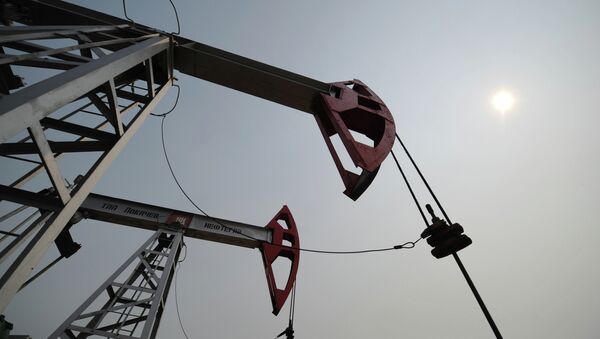US refineries and consumers have contributed to higher demand for crude oil in North America, whilst production, including shale oil, has faltered amidst disinvestment concerns, brightening the outlook for oil bulls.
Global oil prices rose by 1.3-1.5 percent on Wednesday, adding to the gains posted earlier this week as the lower production outlook in the US coincided with lower Saudi exports expectations and higher demand for fuel in North America. Brent crude rose to $48.30/bbl in London, whilst US oil rose to $45.72/bbl in the futures market. The previous day, both oil benchmarks appreciated by 1.4 percent, and the current gains look sustainable in the near-term.
"The oil price… climbed sharply overnight as the Energy Information Agency cut its forecast for US production in 2018 and API data showed another large inventory drawdown," William O'Loughlin of Rivkin Securities in Darlinghurst, New South Wales, Australia said.
According to the data from the American Petroleum Institute (API), US crude stockpiles decreased by 8.133 mln bbl in the first week of July compared to the previously expected inventory draw of 2.99 mln bbl, thus exceeding the initial oil demand expectations roughly threefold.
Even though the projected slowdown in US oil extraction will provide some support to oil prices in the medium-term, US production will be still near its record-highest, meaning the demand side of the energy market will be definitive in setting the oil prices the next year.
Meanwhile, Saudi Arabia, struggling to meet their fiscal goals due to the persistently low crude prices, is intending to cut oil exports by 600,000 bpd in August due to the rise in domestic consumption. The OPEC oil production caps are still intact, and the Saudi factor, combined with the North American buildup in oil consumption, will render global oil prices higher in the coming few weeks.
In June 2015, US oil production hit its then-highest on the record at 9.61 mln bpd, but the volumes of US oil output have exceeded that number by now. However, with the rebound in US manufacturing, and a significant expansion in oil refining and petrochemistry, US oil consumption has increased as well, balancing the market somewhat.
There are, however, pessimistic forecasts regarding the future oil prices, and a further expansion in shale oil extraction is typically seen as major factor undermining oil prices. However, investment flows into shale small caps are unsustainable, albeit shale drillers are more flexible adjusting their output levels in accordance with oil prices dynamics, allowing them to stay afloat even during the periods of declines in oil prices.
"Given that the market is now out of patience for large stock draws and increasingly concerned about next year’s balances, we believe that price upside will need to be front-end driven, coming from observable near-term physical tightness and signs of a US shale activity slowdown on a sustained basis in coming weeks," Goldman Sachs analysts wrote in a note.
The EIA’s World Oil Outlook, however, suggests that the global oil supply and demand are currently balanced at roughly 97 mln bpd being produced and consumed at this point. Global oil demand is poised to increase to 99.2 mln bps by 2021, the EIA said, and to 109.4 mln bpd by 2040. However, the rise of electric car technology and the re-introduction of coal as source of energy by the Trump administration in the US might affect these projections.
Oil supply, the EIA said, is poised to drop before the demand for oil starts to wane, meaning there is a period of high oil prices up ahead. Whilst the older oil fields, dominated by traditional methods of crude extraction, are depleting rapidly, the surge in shale oil might fail to make up for the slowdown in traditional oil production.






